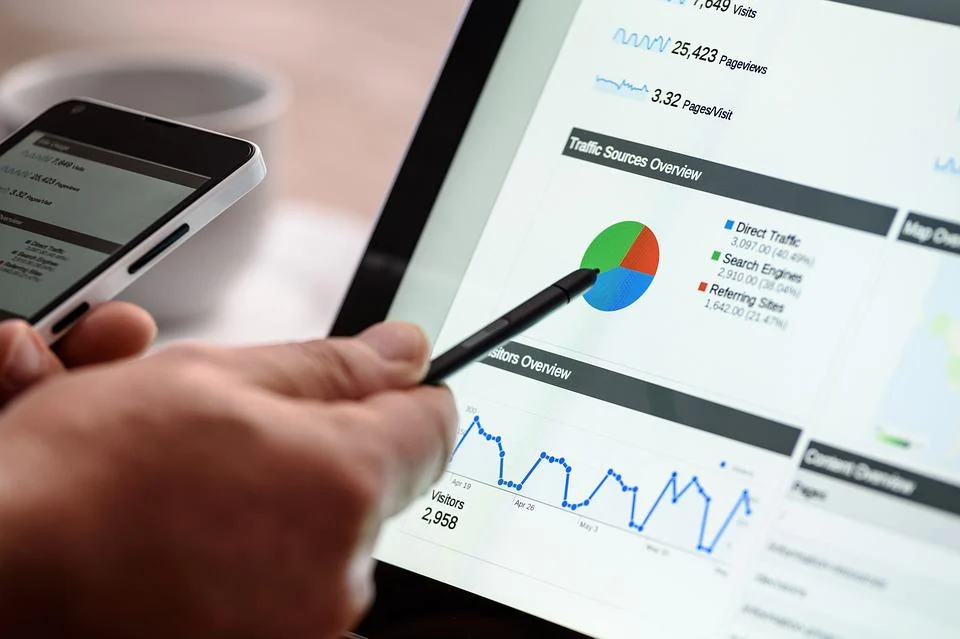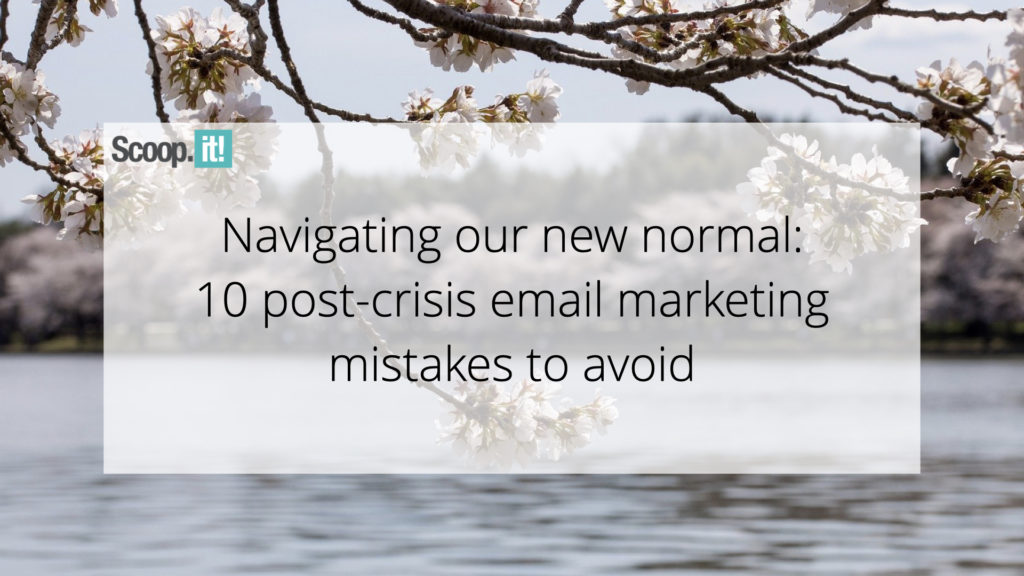What is Call Center Monitoring?
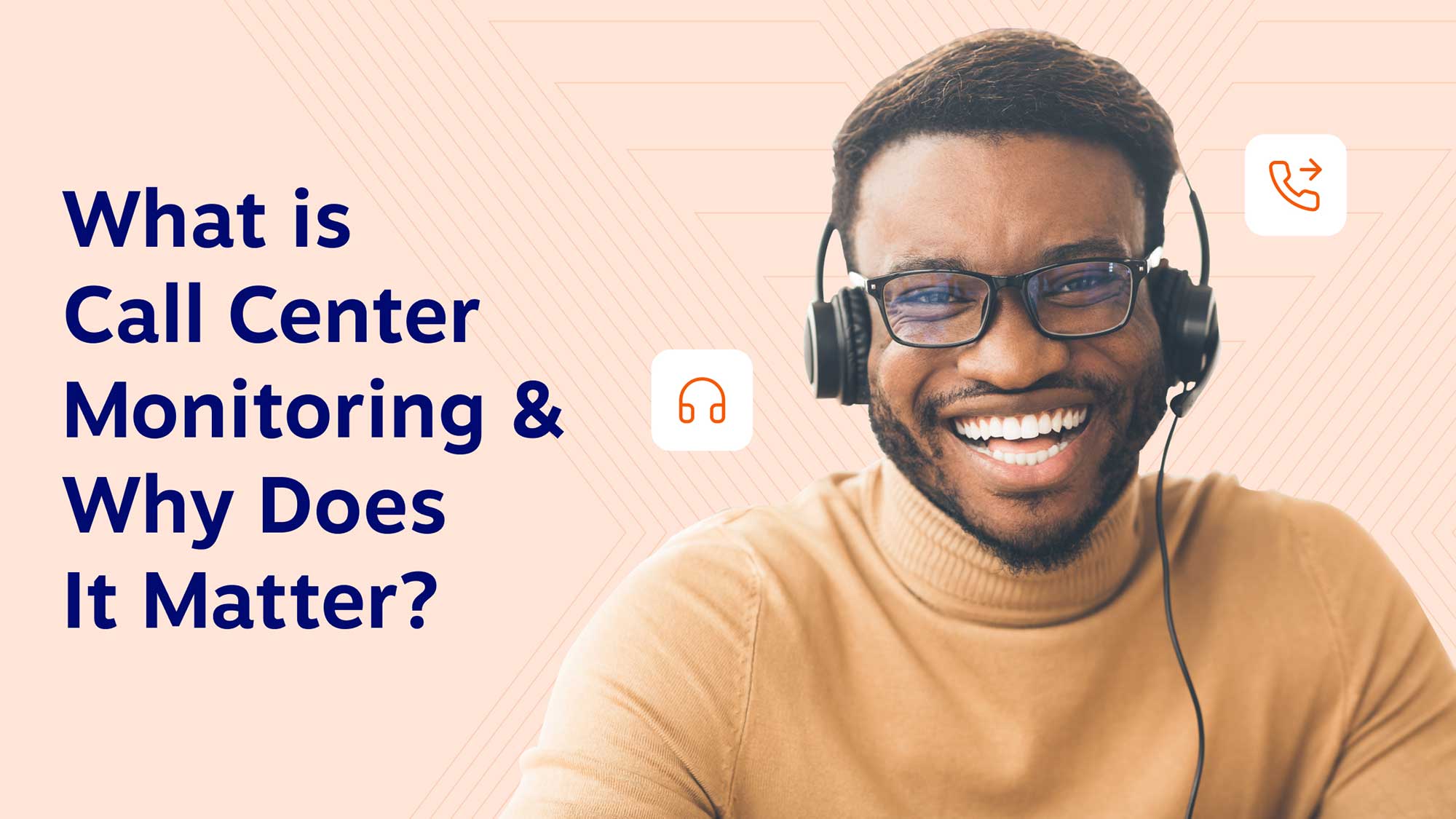
Table of Contents

Call center monitoring is a practice of listening to customer calls that take place in a call center in order to make sure customer concerns are handled quickly and efficiently. A call center is a centralized department in a company that handles incoming and outgoing client and prospect contacts.
Common examples of call center monitoring can include:
- call recording,
- the ability for a monitoring supervisor to silently join a call and make notes so they can give the agent feedback at a later time, and
- chat features (like whisper capability) that allow the agent to receive guidance or solutions from their supervisor while on the phone with a customer.
Call center monitoring is crucial to ensuring great customer service. It also shows your call center agents that the firm cares about their performance by:
- Building skills – continuous feedback opportunities help agents excel at their jobs and reduce the number of agents needed to handle calls.
- Providing accountability and documentation – call center monitoring tells your agents that you care about the quality of their work, level of professionalism, and how it affects customer interactions. It also provides critical documentation in case of a customer dispute with your firm, such as logging how many times they had to call about a specific issue.
- Identifying talent – great call center agents have transferable skill sets that can benefit other teams, including sales and product.
- Lowering costs – analyzing calls for common issues helps you find opportunities to improve product documentation, your website, or other venues that may save the need for agent calls in the future.
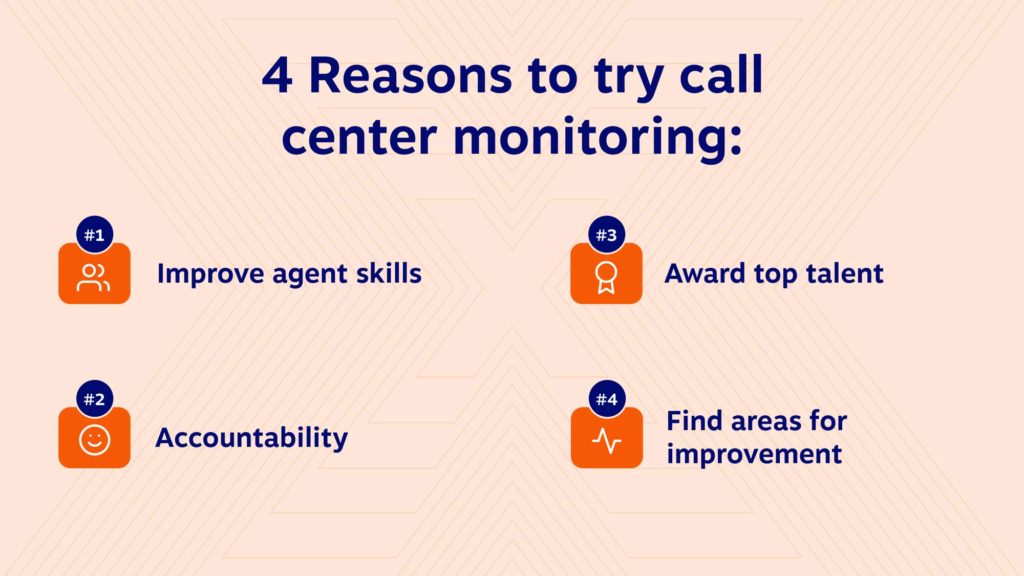
What are some best practices for call center monitoring?
Here are some best practices to consider when setting up a call center monitoring solution for your team.
1. Define Success for Your Call Center Agents
Call centers can be fast-paced and stressful operations, especially during peak periods. Top performing call centers develop Key Performance Indicators (KPIs) to capture the most important quantifiable measures of success or failure. And they ensure that agents understand which metrics matter the most to successful customer experiences.
For example, the call center may tell agents that it is better to keep customers on the phone for longer rather than have them call again about the same problem. In this case, agents don’t have to worry that their average call length is too long, if their corresponding First Call Resolution (FCR) numbers are high.
Sometimes, there will also be situations your metrics can’t measure. In these cases, call centers should give agents clear instructions – are they empowered to use their judgment to fix a customer problem, or do they need to escalate to a supervisor? Clear directives will ensure that your operation runs smoothly even when forced to go off script.
2. Analyze Every Call If You Can
Many firms can record all calls but may stop short of full-call analysis because they are not using the latest call center tools.
But for those who make that investment, the ability to analyze every call with artificial intelligence (AI) allows you to create broad data sets about your whole customer experience. You may also find it flagging problem calls that went unnoticed.
3. Let Agents Self-Diagnose Their Own Calls
Call center agents often realize when they have made a mistake on a call. In other cases, they may miss something at the moment, but it would become evident to them when they listened to the call from the outside, like a third party.
Letting agents play back calls and think through how they might have improved them is one of the most effective means of training because it changes the feedback dynamic. Instead of a superior telling the agent something they may already know, the agent can provide an assessment of what went wrong and think about how to fix it next time.
And if the agent doesn’t see the problem even after multiple playbacks, the company knows they need more training in the relevant topic.
4. Let Customers Submit Feedback
There’s no better source of information about customer satisfaction than the customer. Make sure that you regularly provide opportunities for feedback, including by:
- Offering a survey opportunity at the end of every call
- Sending email follow-ups to customers following an interaction, asking for their input, and
- Inviting customers to participate in calls with supervisors to provide open-ended feedback about their experience.
The information you collect is vital to understanding customers’ mindsets and will be important test data to compare with any automated sentiment analysis tools you might use for call recording.
Surveys can also provide an essential milestone for customers. They communicate that you believe their issue is resolved, and they require no further assistance. If this isn’t the case, customers will quickly respond to let you know they still consider the matter unresolved.
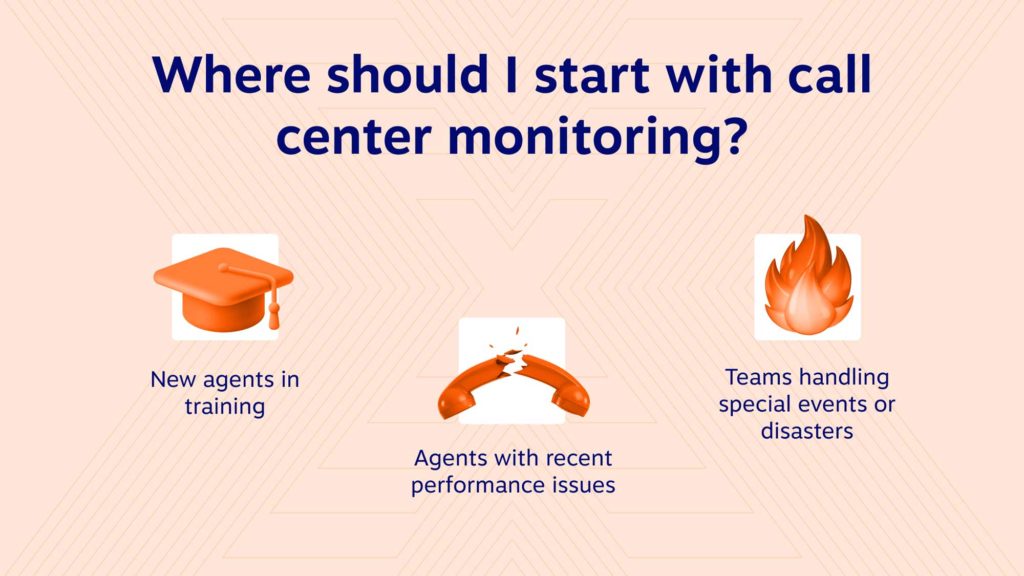
What are common questions about call center monitoring?
Now that we’ve defined call center monitoring and its importance let’s look at some common questions businesses have about monitoring.
How many calls should be monitored in a call center?
Even if your company records all calls for documentation purposes, you won’t be able to monitor every call manually. What matters most is that every agent understands that any call they are on can be monitored at any time.
Most companies employ a strategy of monitoring at least two calls per week from every agent, regardless of seniority. This helps ensure fair treatment and allows even your most experienced team members to receive crucial feedback.
Of course, extra monitoring is often considered for:
- New call center agents in training
- Call center agents with recent performance issues
- Call center teams handling special company events or disaster scenarios
Likewise, call centers that use screening technologies can adjust the number of monitored calls by topic. For example, you may find that calls requesting a password reset, which last only a minute on average, are not the best use of a monitor’s time.
How big should my call center monitoring team be?
Knowing how many calls per agent to monitor is only one piece of the puzzle. You still have difficult choices to make when determining the size of your quality assurance team.
Companies often carry low levels of staff during quiet periods and then ramp up with seasonal increases to support peak traffic times. This will not only mean more overall calls to monitor, but also that more agents have just completed their training and will need extra scrutiny and feedback.
Many companies equip their supervisors with (KPI)-driven dashboards to overcome these issues. The real-time view of call center activity helps supervisors evaluate where best to deploy monitors, ensuring that your team has minimal downtime during their shifts.
Why do my call center monitors need KPIs and metrics?
KPIs and metrics are at the heart of great call center monitoring because they let your entire business – from agent to supervisor – know how you measure success. Common metrics for call center monitoring include first-call resolution (FCR) or the number of Repeat Calls a customer needs to make to solve a single issue.
Analytic-driven call center monitoring allows your company to determine how cost-effective your customer service channels are. It also provides a continuous feed of business intelligence data across your company, ensuring that teams, including sales and product management, have a real-time view of client sentiment.
How do I reduce the need for customer calls without reducing satisfaction?
Even companies with a best-practice call center may look for ways to improve customer satisfaction while reducing the need for calls.
A critical method for reducing calls is to provide your agents with ongoing training to better educate callers about online or self-service options they could have used to solve their problems. And implementing an automated phone system to screen calls can help you direct customers with frequently asked questions (FAQs) to recorded answers that may eliminate the need for a live agent.
On a broader scale, omnichannel contact center solutions have evolved to allow customers to get the help they need by whichever channel they prefer, including phone calls, email, SMS (texting), or social media. Users who prefer phone calls may use other channels for quick questions, reducing the overall need to speak with a live agent.
Where can I learn about the best solutions for call center monitoring?
Nextiva experts can help set up your call center monitoring. Talk to an expert to set up your call center today.

